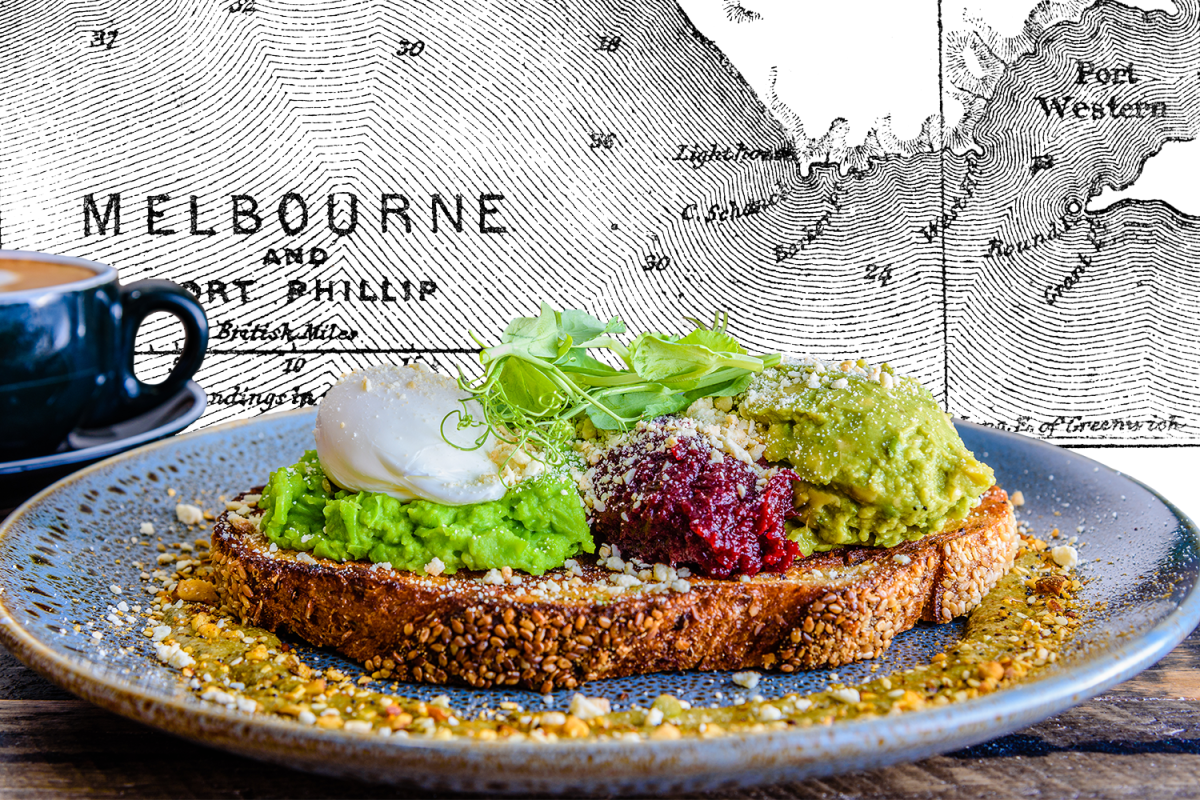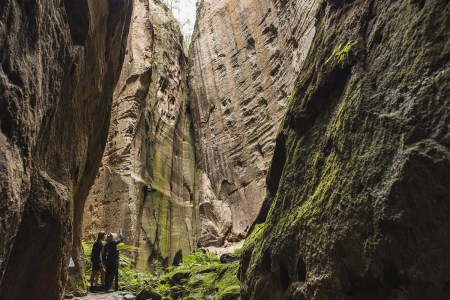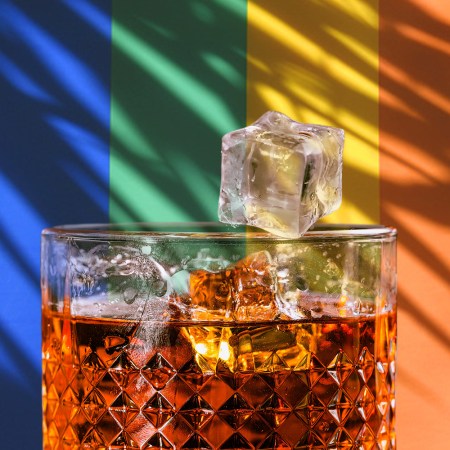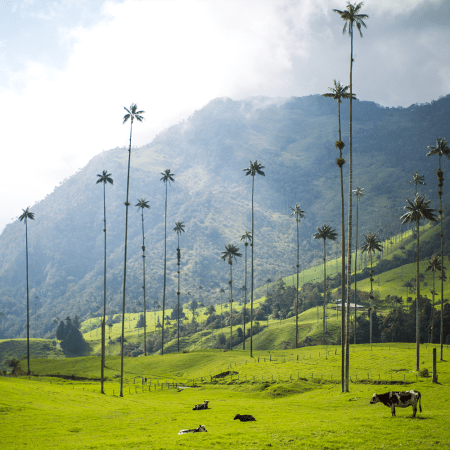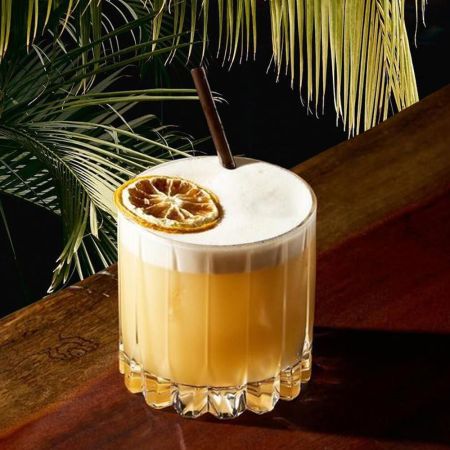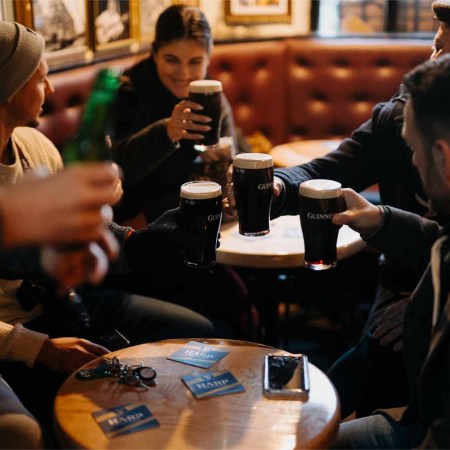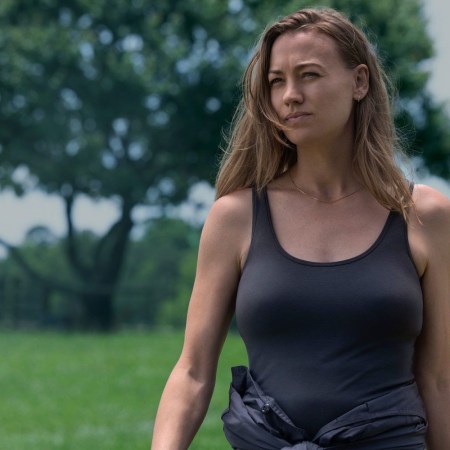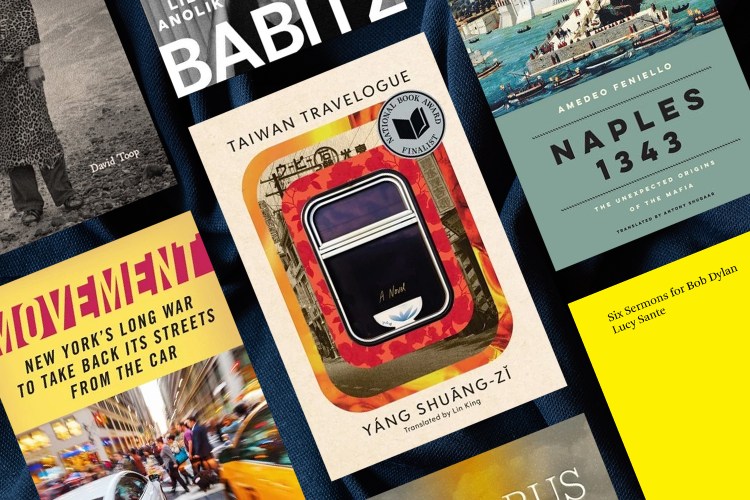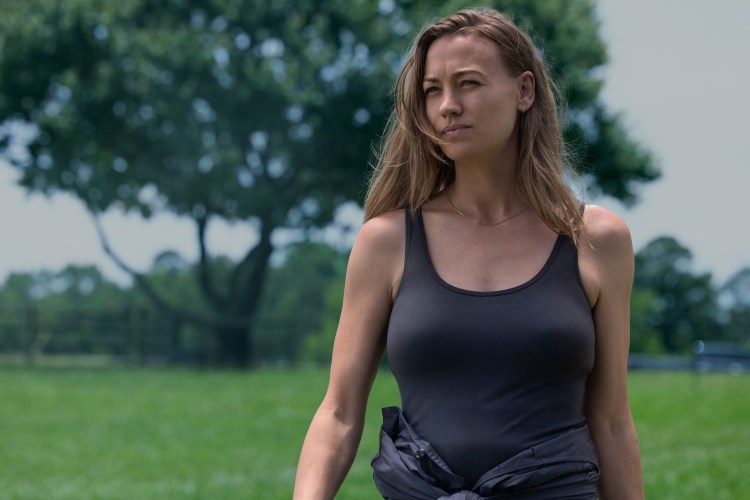For most Americans, a visit to Oceania is a serious undertaking. As in, I tell people I traveled from L.A. to both New Zealand and Australia this year — separately — and they cringe or exclaim. Not only is the flight a whopping 15+ hour endeavor (and that’s if you’re lucky enough to find a direct leaving from the West Coast), but the ticket price can be prohibitively expensive, too. With the high cost and lengthy flight factored in, booking a longer stay is basically a requirement for most American travelers. On that front, I dialed in just over two weeks road-tripping around both islands of New Zealand, and set aside about 10 days to explore Melbourne, Australia.
Because Melbourne already has an established reputation as one of the best food cities in the world, framing my visit from that angle seemed to be an ideal rubric. For the week-plus I spent in the city, I mostly hung around the Central Business District where a large amount of the best dining institutions are located. But several day trips to surrounding suburbs are required to get the full scope of the food scene, and one of the highlights was an overnight trip journeying down the Great Ocean Road, which includes some of the most insanely beautiful countryside on the planet.
For anyone planning a similar trip, here’s a guide to the best breakfasts, lunches, snacks, happy hours and full-blown feasts encountered along the way. Consider this a foodie’s guide to where to eat in Melbourne — that’s pronounced “Melbin” (think of the band The Melvins and swap the “v” for a “b”) — from a first-time visitor with an overactive palate.
Days 1-2: Explore the Docklands and Lower CBD
If you’ve already been to Auckland, then the term CBD will be a familiar one. But for those who are just getting into the Oceania swing of things, it stands for Central Business District, and no, it’s not a weed thing. In Melbourne, the Central Business District is where most visitors stay. It’s a hotbed of hotels, restaurants, museums like the National Gallery of Victoria, the Koorie International Trust (which is devoted to preserving Aboriginal culture in Victoria) and more.
How to Get There:
If you live on the east coast, making your way to L.A. or S.F. before getting on a long-haul flight might be the best bet. Most flights from New York go direct to Auckland or Sydney before taking a hopper over to Melbourne. Take a cheaper domestic flight to the west coast, and hop on the direct from L.A. to Melbourne to avoid changing planes when you’re jet-lagged — there’s even a few great airport hotels right near LAX and SFO if you want to break up the trip a little. The direct flight from L.A. to Melbourne on Qantas is about 15 hours, but it comes with a couple meals, decent legroom and good service. If you’re part of the OneWorld Alliance, you can even get status perks and earn miles for airlines like American and British Airways.
Once you’re at the airport, you will need to get a taxi or book a car to the city — it’s about a 30 minute drive to the CBD. If you arrive in the morning, as most red eye flights from the states do, scan the hillsides on the drive in for early rising kangaroos. With any luck, you just might spot one on your first day.
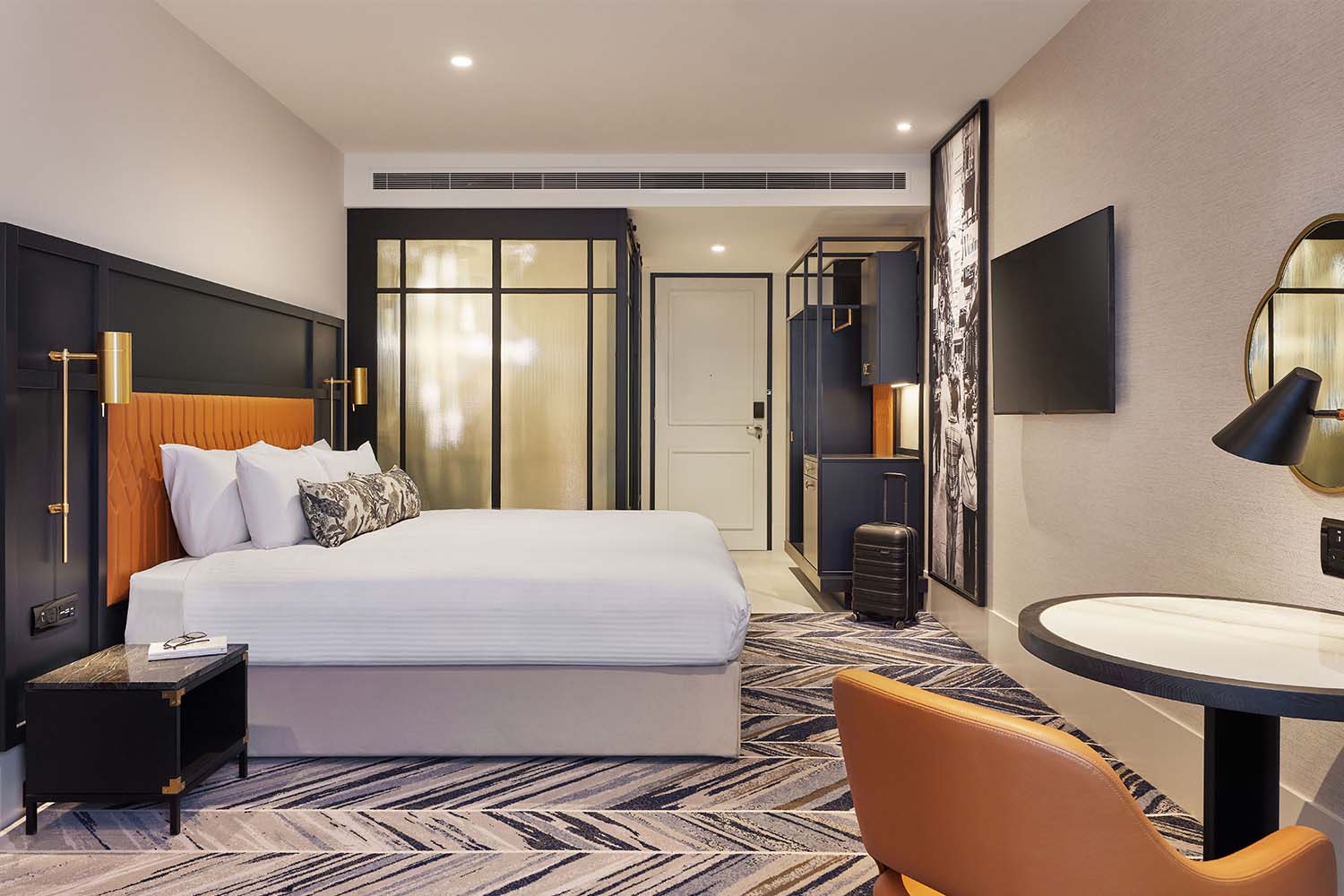
Where You’re Staying:
Settle into a room at the brand new Dorsett Melbourne while getting your sea legs. Located just south of the CBD, this area called Docklands was the original port of Melbourne and was especially busy during the gold rush of the 1850s and ‘60s when immigration was at a peak. Thanks to a brand new stadium, it’s becoming a new hub for hotels, too. Dorsett is a Hong Kong-based hospitality brand, and because Hong Kong hoteliers are some of the best in the world (Rosewood, Langham), you’ll notice an impeccable attention to detail, over-the-top customer service and whisper-quiet rooms. Seriously, even in a bustling part of the city, I never heard any noise in my room — even when I was sleeping strange, jet-lagged hours. The hotel is equipped with an indoor pool (though be warned, there were lots of families during my stay), a buffet breakfast and contemporary decor. It’s also just a few minutes’ walk from the free city tram network, which comes in handy.
The Free City Tram Network Is Your Best Friend
Like most major metropolises that aren’t in America, Melbourne has a robust tram (aka subway/metro) line that runs throughout the city and its outer suburbs. However, what’s unique in comparison to other places is a designated area within the city center where anyone can get on and off the tram without needing a ticket or paying a fare. The areas are very clearly marked and announcements are made within the region, so it’s intuitive even for first-time visitors. Use this network to cut down on your walking time around the CBD, or opt for a walk when the banquet menus get to be too much.
Daily Eating Itinerary:
Like any great eating city, Melbourne has a whole host of formal, fine dining outposts as well as casual, walk-in and snackable options. I’ll give a rundown of options for both throughout the guide. But keep in mind, the exchange rate works in an American’s favor here, so even the higher end spots won’t put you out the way they might back home.
Must-visit: Queen Victoria Market
Most visitors are already tipped off to make their way to this historic and deeply beloved food hall, but just in case you didn’t get the memo, this is the spot to be. You haven’t really had a toastie (grilled cheese) until you’ve had Ripe’s truffle honey, cheddar and mozzarella on sourdough version coated with fresh flakes of Australian black truffles. Or, wander over to The Borek Shop for Turkish pastries stuffed with savory fillings like cheese and spinach, lamb or potato and veggies. Just outside the market, don’t let the line around the American Doughnut truck hold you back — it goes fast. These doughnuts are like nothing found in America. Rather, they are more like what we’d call jelly doughnuts or filled doughnuts, but served in bags of five, piping hot and fluffy, rolled in sugar and stuffed with jam. I quite literally made myself sick eating three and had to walk around for an hour to feel better. (It was worth it.)
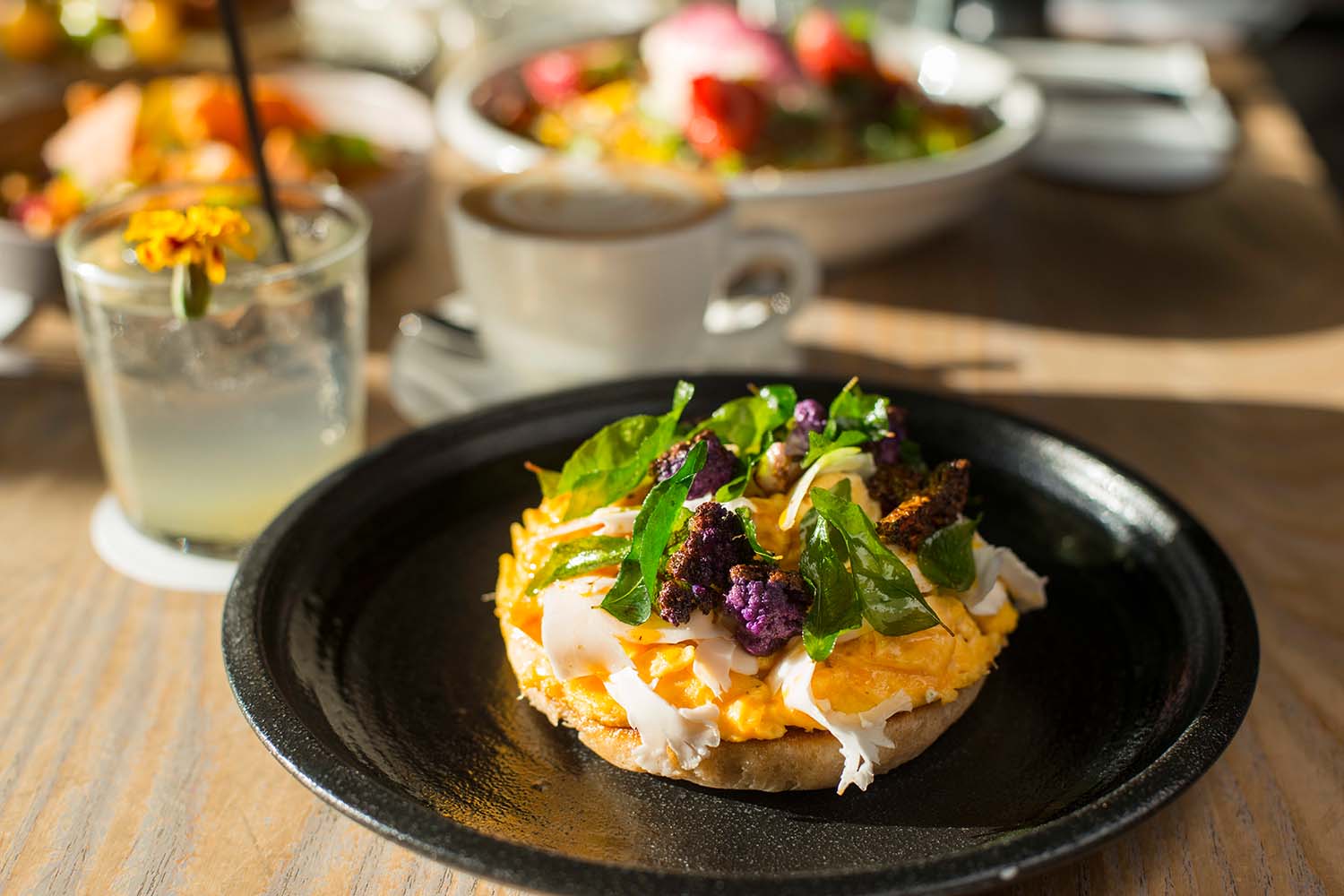
Breakfast: Higher Ground
If you arrive in the morning and have it in you to walk a few blocks for proper breakfast, there’s no better introduction to Melbourne than Higher Ground. I returned three separate times, so I’ll let the frequency speak for itself. This is a modernist coffee sanctuary in a former power station space, with lots of exposed brick, multilayer seating, communal couches and calming greenery. The food is very much “Aussie cafe” style, with options like build your own Benedict, a decadent caviar and Champagne brunch or, my personal favorite, a fresh-baked soft pretzel with an entire avocado, microgreens, edible flowers and lime dressing. Halloumi that’s dipped in honey and thyme then deep fried is an add-on that should be mandatory. Coffee snobs will love the “barista’s breakfast,” a coffee sampler with an espresso (sparkling water back), flat white and small batch brew.
Visiting Carnarvon Gorge: Australia’s Great Prehistoric Hiking Destination
With ancient art, prehistoric plants and hidden canyons, Carnarvon Gorge offers hikers an unforgettable Garden of Eden experience.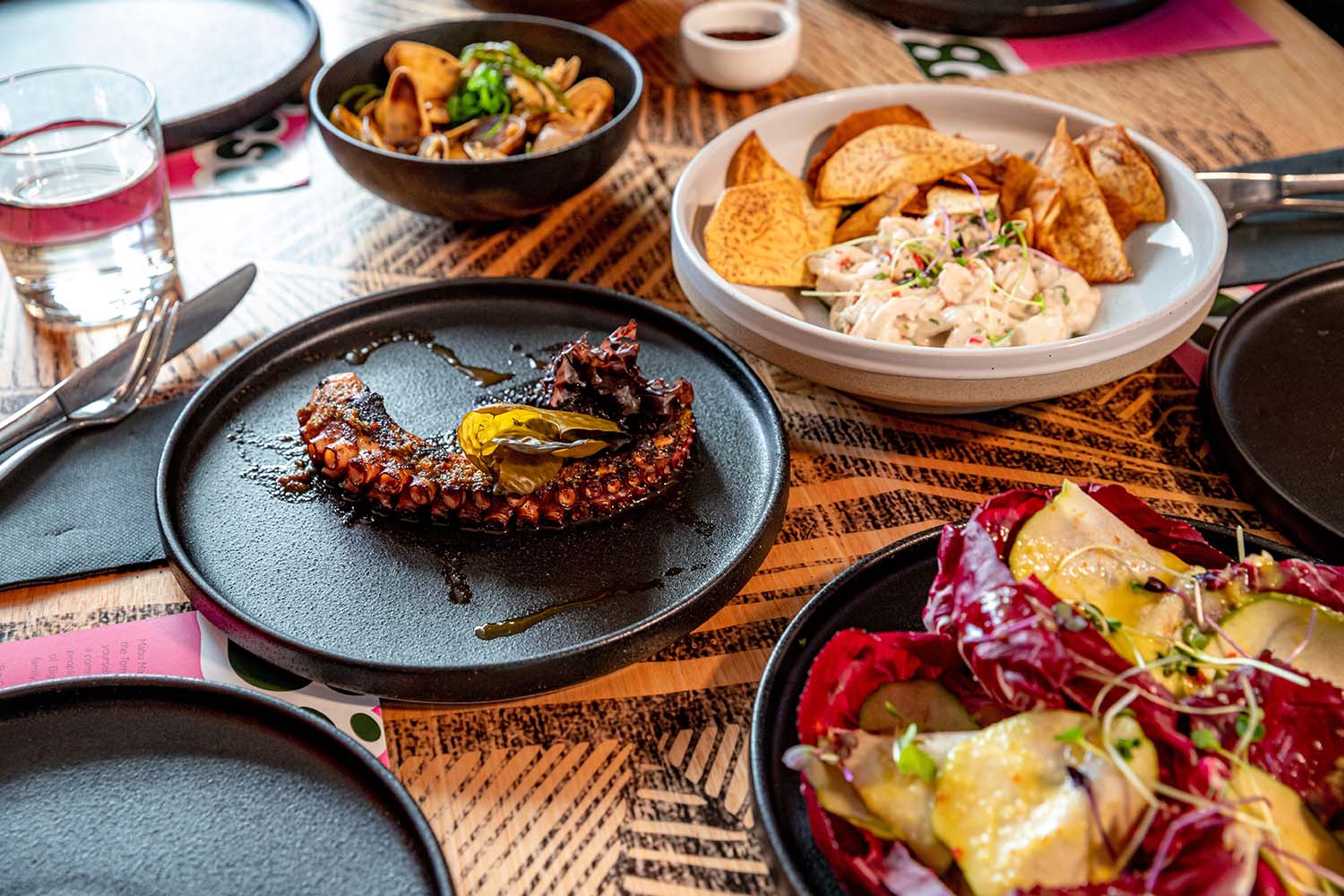
Lunch: Saluministi
We came here as part of the Foodies Trail tour, which is a great first or second day activity if you’re trying to decide where to eat in Melbourne while shaking off the jet lag. I recommend their guided food walk to help get the layout of the city and hit some local standouts. Saluminisiti is an Italian-Australian panino bar that proudly serves fresh porchetta, as well as imported prosciutto and mortadella, to name a few standout bites. Get a sandwich or just ask for a few slices of porchetta, complete with crackling skin, to indulge in a feast for the senses. Turns out Italians do do it better, even another ocean away.
Happy Hour: Nomad
Come right at 5 p.m. when they open, and pull up a seat at the bar to try a few snacks and drinks from a Sydney powerhouse spot that recently opened in Melbourne. Head down a staircase to the basement of the Adelphi hotel to this warm hideaway, where kingfish crudo with finger lime is a solid way to open up your palate for dinner. Pair it with a glass of Australian wine from their extensive menu or a non-alcoholic spritz. I tried Kibbeh Nayyeh (a Lebanese dish similar to lamb tartare) for the first time here, and it was otherworldly. Consider it.
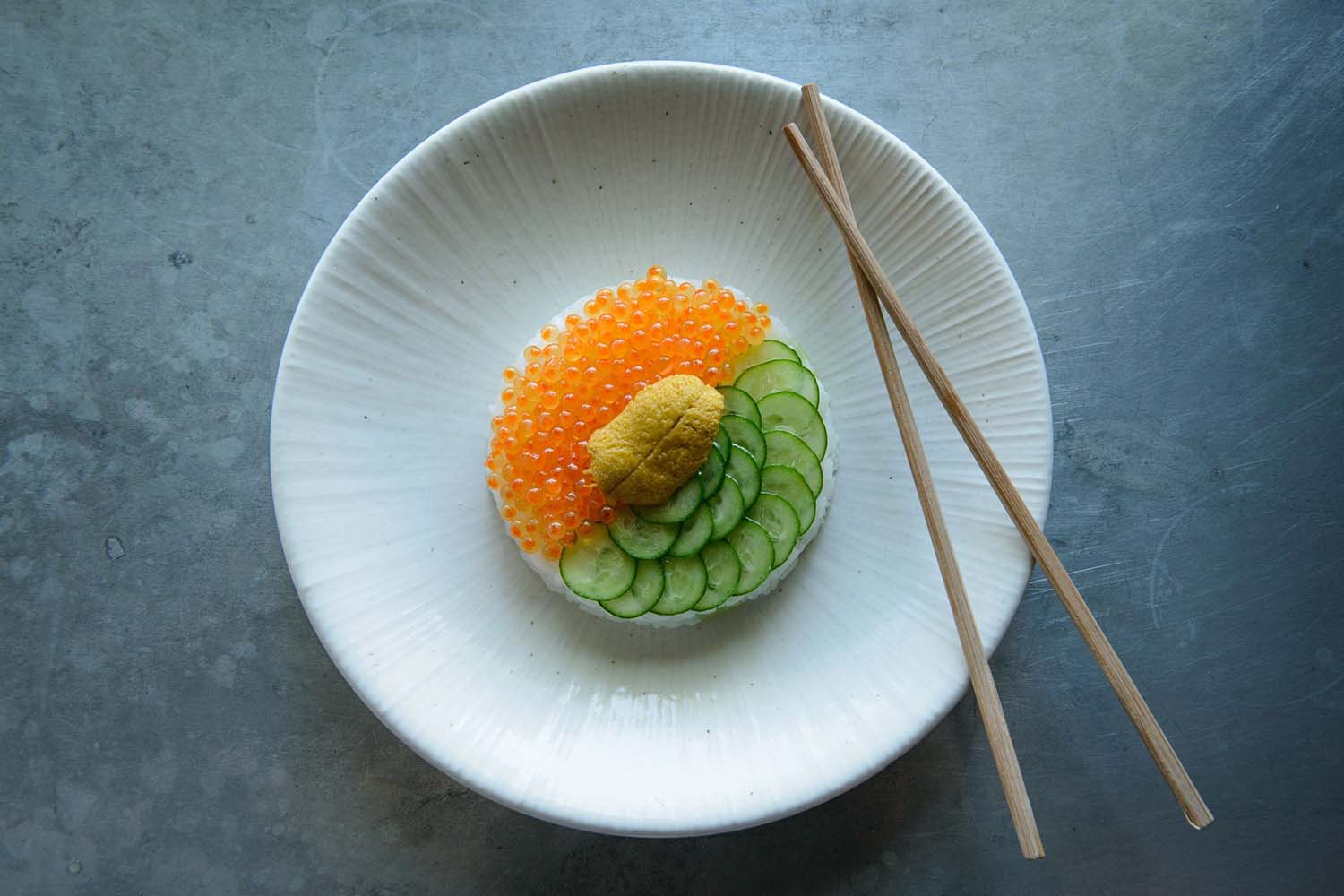
Dinner: Supernormal
One version of a first day in Melbourne is to get off your flight, have a nap at the hotel and venture back out into the world for Supernormal, another introduction to Melbourne cuisine. There’s a reason this buzzy, pan-Asian restaurant has become indicative of the dining scene here, as chef Andrew McConnell combines Korean, Japanese, Chinese and New England(!) influences into one roiling, multi-course delight. Do not even fuck around — get the banquet menu, and dash through dishes like tteokbokki with sweet chili (Korean rice cakes), prawn and chicken dumplings with housemade chili crisp, lamb shoulder with Yuxiang sauce, a pitch-perfect New England lobster roll and peanut butter parfait. McConnell’s intentionally international style is playful and cheeky, but his take on flavor and quality is uber serious.
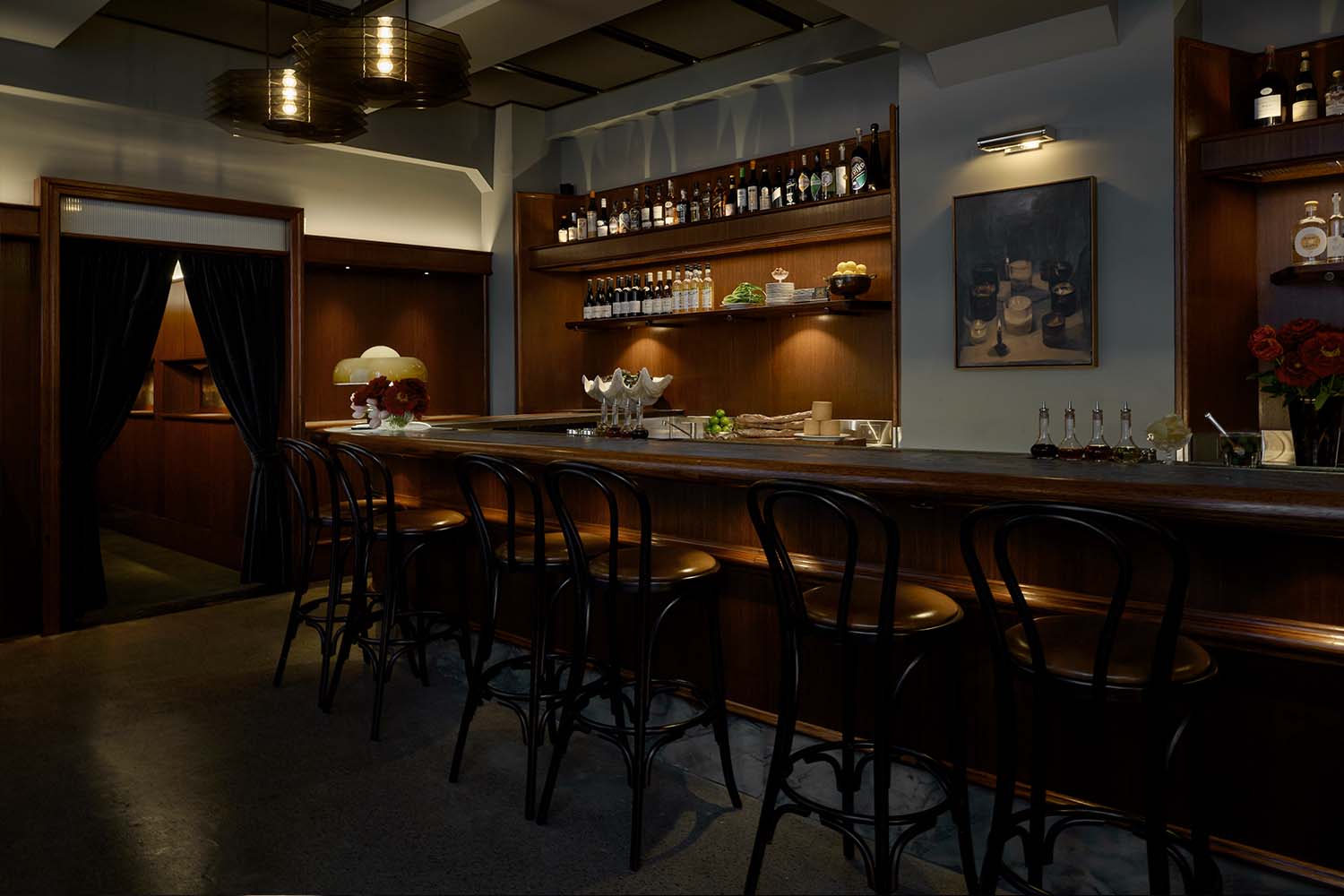
More Drinks: Apollo Inn
Speaking of McConnnell, his newest opening in Melbourne is a formal cocktail bar, the Apollo Inn, where you will definitely want to call ahead and make a reservation. If it’s a Friday, this spot opens at 3 p.m. and you can swoop in for happy hour. A brief food menu includes treats like caviar, oysters and beef carpaccio, but the high-end cocktails are the main event.
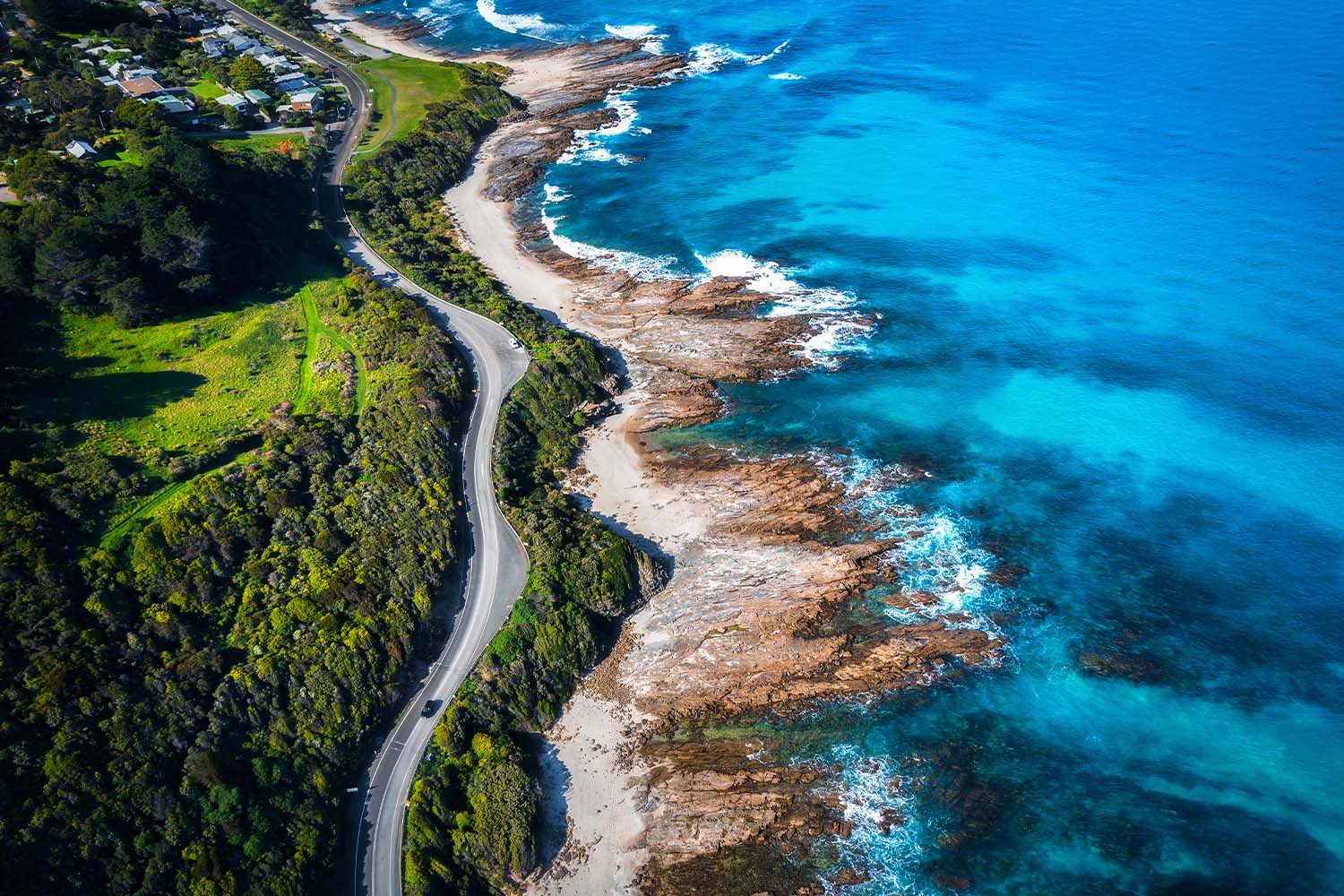
Days 3-4: Journey the Great Ocean Road
In case you’re not familiar, Victoria has what amounts to its own Pacific Coast Highway, aka the Great Ocean Road — a coastal stretch so scenic that it’s not even relegated just to tourists. Everyone from Melbourne locals, to fellow Australians across the country, love this beautiful drive, and if they hear you’re visiting, it’s one of the first things anyone will recommend. The road has a bit of history thrown in, too. After World War I, returning soldiers built the highway as a memorial to the fallen servicemen and women who died in the war; it also served the dual purpose of providing jobs for returning veterans as they settled back into civilian life.
TL;DR: If you make it all the way to Melbourne, this is an absolute must-do for your trip. The foodie scene isn’t quite as developed along the way, as it mostly leads through small coastal towns, but the scenery is spectacular. Maybe visit Queen Vic Market before you leave and grab some boreks or toasties to stash for later. The road is about 400 miles and takes about nine hours to drive in its entirety, so staying overnight near the terminus in Port Campbell is recommended. (There is a quicker route back via the freeway which takes about three hours if you want to do it all in one day.)
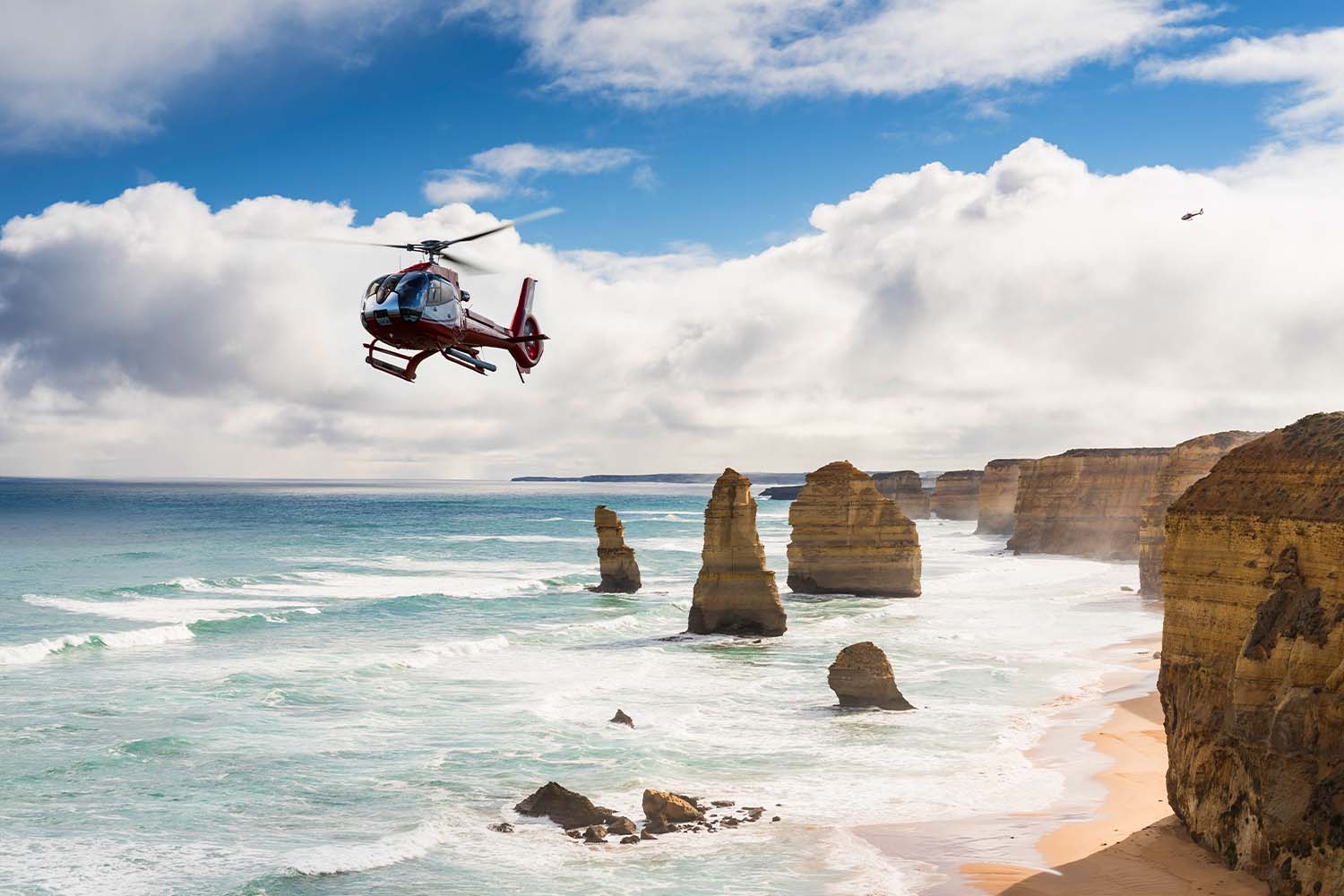
Recommended Great Ocean Road Stops:
Part of the fun of a road trip like this is plotting out the path yourself, but here are a few suggestions from the route I took as part of a guided tour with Localing Tours. Bells Beach is a beautiful early stop for great views of waves, surfers and even some sand if you want to incorporate time for a beach walk into your drive. Definitely brake for the picturesque Split Point Lighthouse at Airey’s Inlet, where the Lighthouse Tea Rooms, an adorable all-day cafe, offers local snacks like cheese toasties and fresh smoothies or coffees.
For a proper lunch, stop at The Birdhouse in Apollo Bay. They serve fresh mussels and calamari with great views of the bay. There are beautiful hiking trails aplenty in Cape Otway, some through tall forests with waterfalls and other natural sites, but do your own research based on difficulty level and timing. If you’re intent on spotting a koala, there’s nowhere better than Kennett River Koala Walk, where these furry tree-dwellers tend to hang out.
By the time you get to the main event, the Twelve Apostles lookout, you’re just a few miles from the end of the road. The Twelve Apostles are craggy, towering rocks — similar to the Pancake Rocks of the coast of New Zealand’s south island — that have become a destination at the end of the Great Ocean Road. Get out for pictures, or take a (brief) helicopter tour to get a bird’s eye view of them, and then head to Port Campbell for the night.
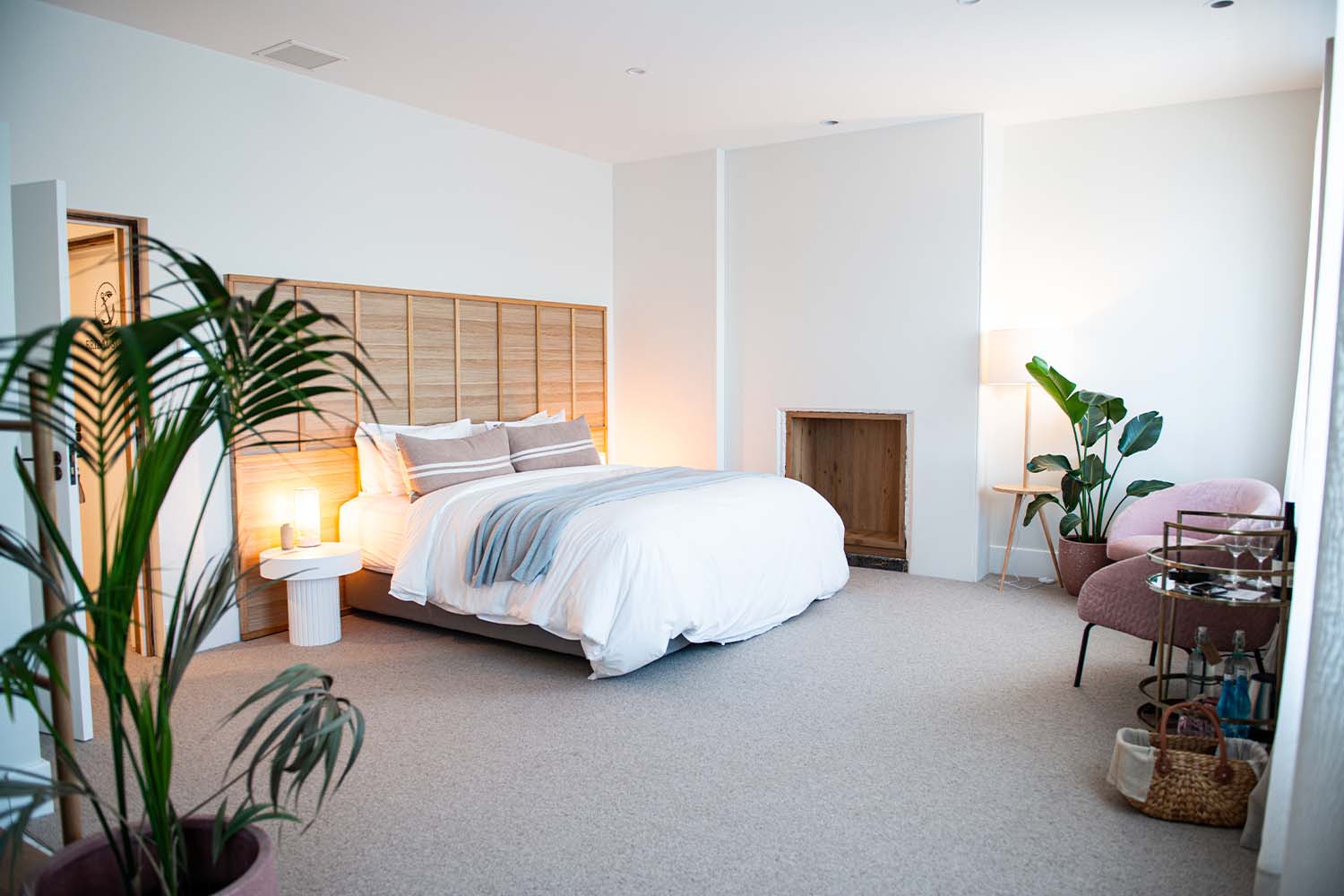
Where You’re Staying:
A pristine, isolated property set on 30 acres, Anchors Port Campbell is proudly family-owned and operated, to the point that if you’re friendly, they just might invite you to go feed the animals — two pigs, a goat and a pony. These beloved pets are down the driveway from the three private cottages, so it’s not a concern if you’re not interested in feeding them an apple or two. In an area that isn’t necessarily known for refinement, this villa is a standout. Don’t stay anywhere else. Aside from gorgeous views through an all-glass wall, it’s got a stand alone shower and tub, strong AC, a gas fireplace, a living area and kitchen, a massive king bed on an elevated platform for more views and even laundry on-site.
Breakfast: Grassroots Deli Cafe
Most of the restaurants available only offer pub food, but this daytime cafe serves pretty killer breakfast and lunch items from 8 a.m. to 3 p.m. The Loch Ard, named after a local shipwreck legend, is eggs your way with mushrooms, tomato, spinach and avocado on sourdough toast, and almost any item can be made gluten free or vegan.
Before leaving: Childer’s Cove
This more secluded beach was a recommendation from the owner of Anchors Port Campbell, and ended up being my favorite beach in the area. It’s right near the site of the infamous shipwreck, and a short walk down to the sand gives a good vantage of the cove, along with distant views of some of the other “apostle” rocks, soaring cliff faces and the green-blue water.
Days 5-7: Settle in and Discover the Upper CBD
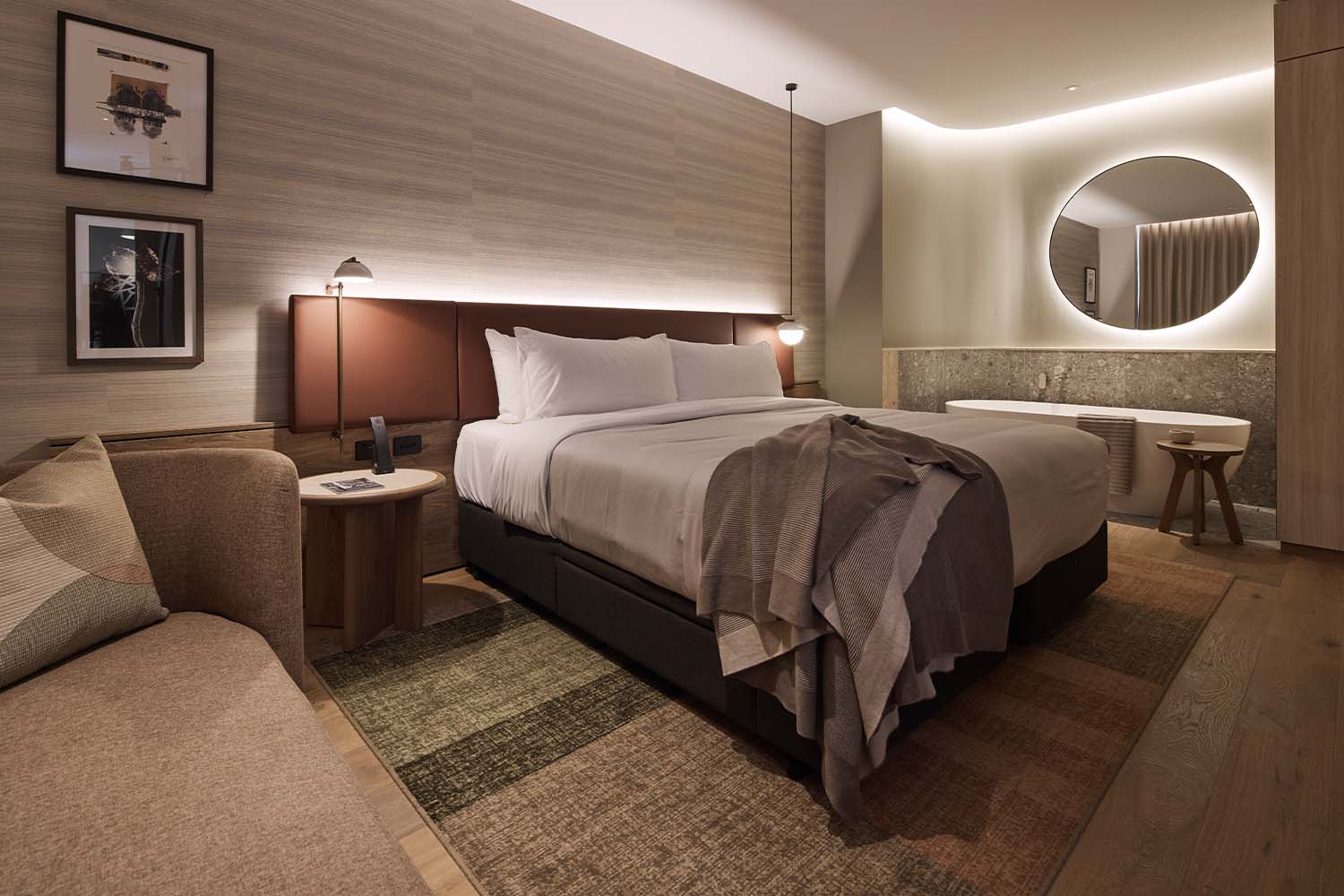
Where You’re Staying:
Take the freeway back to Melbourne and check into a hotel in the upper CBD, closer to all the action. Now that you have a better understanding of the city’s layout, it’s better to be in the thick of it. Like the Dorsett, Rydges Melbourne is literally brand new and another example of super friendly Australian hospitality. Rydges is a 100% Australian owned and operated hotel brand, which is another reason to stay — it gives you the chance to experience a brand that’s not in the states yet and support local hoteliers. So far, Rydges only has properties in New Zealand and Australia but continues its expansion with this new location.
Because the hotel was still in its opening phases when I was visiting, they put me up in the Rydges Deluxe Apartment, which has a suite-style setup with a kitchen, dining and living room on one side, and a bedroom with a standalone tub and bathroom in the adjoining room. Located on one of the top floors of the hotel, it had sweeping views of the city and, needless to say, was a rather luxurious option. If I ever go back to Melbourne, I will be staying here.
Daily Eating Itinerary:
While almost the whole CBD is walkable within a 15 to 20 minute radius — and the free city tram network is ideal for the farther reaches — these restaurants are more central to the upper part of the CBD. You could easily swap them in and out for the earlier picks, especially with taxis or tram use, but all of them are nearby the Rydges hotel.
Must-visit: Lune Croissanterie
On my first try, I waited almost an hour to get a cruffin, and they sold out literally the person before me. On my second try, I woke up so early to go stand in line, I somehow lost my headphones charging case on the walk over. When I tell you that neither of these terrible experiences could even detract from the absolute pleasure of the cruffin, it’s shocking right? I don’t know what Kate Reid did to create this pastry, which is, yes, a croissant in muffin shape, but it’s worth every minute of annoyance in the line. When I went, the seasonal filling was lemon curd, but locals told me passion fruit is another favorite. Take an hour, wake up early and wolf down a cruffin. You will love it.
Breakfast: Pellegrini’s Espresso Bar
The concierge tipped me off day one that around the corner from Rydges is a historic Italian coffee counter. Aside from classic coffee drinks and the comforting feel of an old-fashioned diner, Pellegrini’s serves up a mean toastie and pastries galore. Chatty baristas who know half the customers that come in will give plenty of advice and admonishment about where to visit and what to avoid. After moving over to Rydges, I went for a coffee here at least once a day.
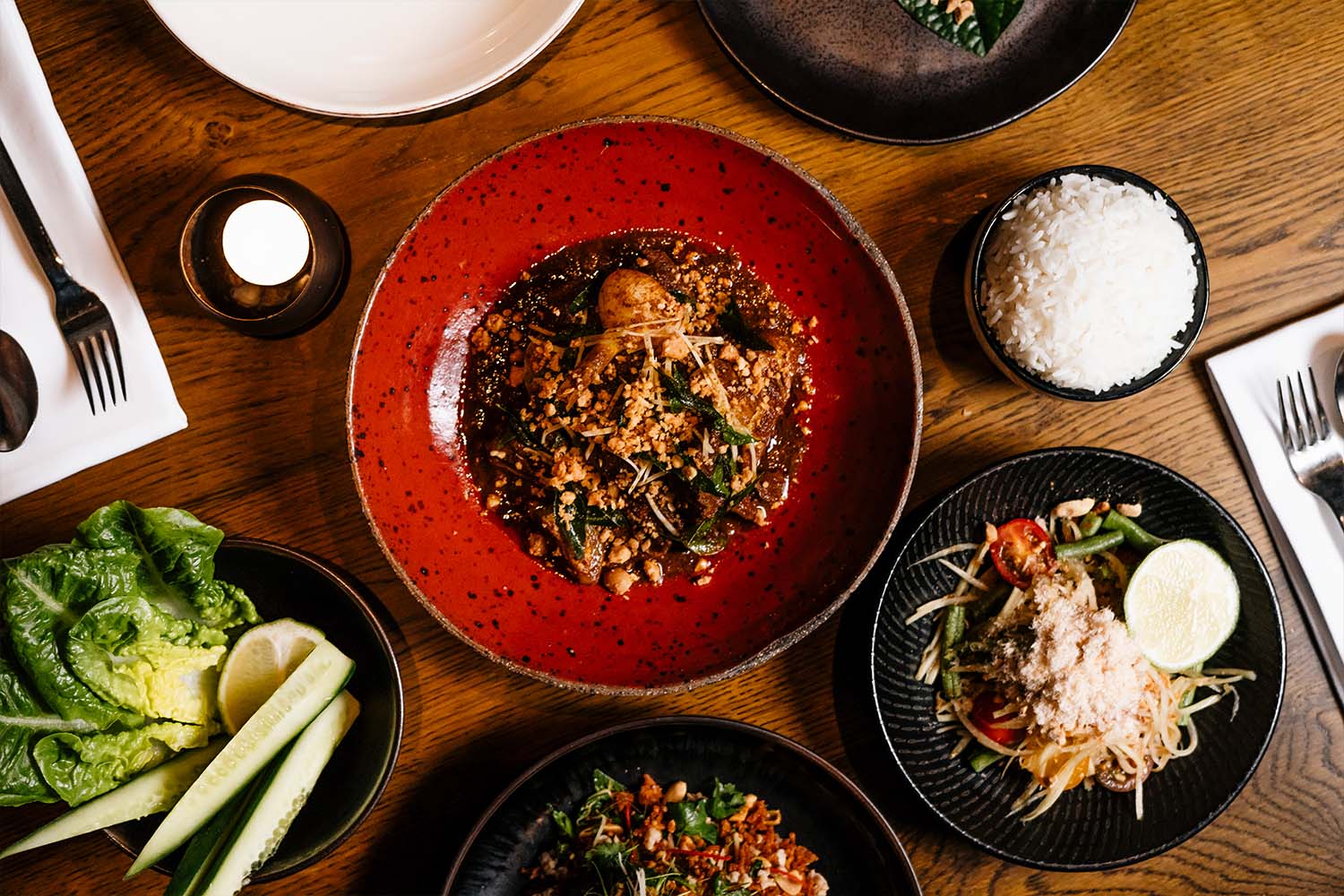
Lunch: Longrain
Longrain is only open for lunch on Fridays. Otherwise, go for dinner because it’s some of the best Thai food I’ve had in my life. Another banquet option (tasting menu) is the way to go here, with so many incredible dishes it’s almost impossible to choose a highlight. If you only go for one thing, make it the Yum Kao Tod, crispy rice with pork, ginger, mint and coriander, or the wagyu beef shin curry with pickled garlic and Jerusalem artichokes.
Happy Hour: Farmer’s Daughter
Because Farmer’s Daughter is open from 11:30 a.m. on and some of the other spots on the list are only for dinner, it gets slotted into the happy hour space. Basically, when you’re on a trip booked around where to dine, it’s important to make new categories beyond the standard breakfast, lunch and dinner, so that’s what I’ve done here. With all ingredients sourced from a farm in Gippsland, the kitchen lives up to its name.
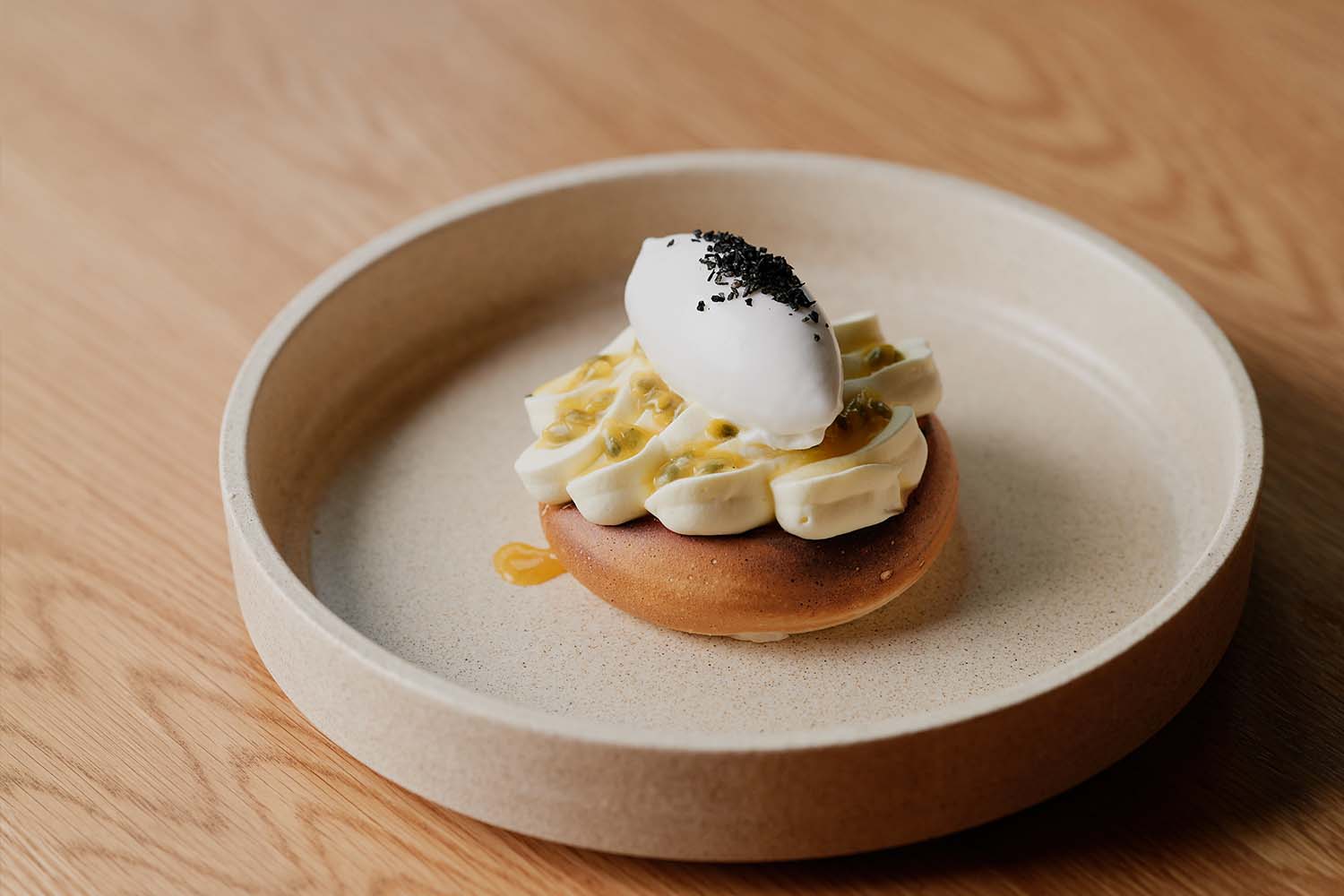
Dinner: Aru
I’m recommending you come here for dinner because I came for lunch after my fateful American Doughnut encounter at the Queen Vic Market, and the waiter was clearly agitated that we were missing out on the full experience by only ordering a couple of things. Learn from my mistake, come to Aru hungry and prepare to be inspired by kingfish collar with orange kosho and curry, spanner crab fried rice, smoked scallops with turmeric mayo and savoy cabbage with umami butter and mushroom. This is also one of the more high end places on the list, so dress accordingly and bring your best credit card.
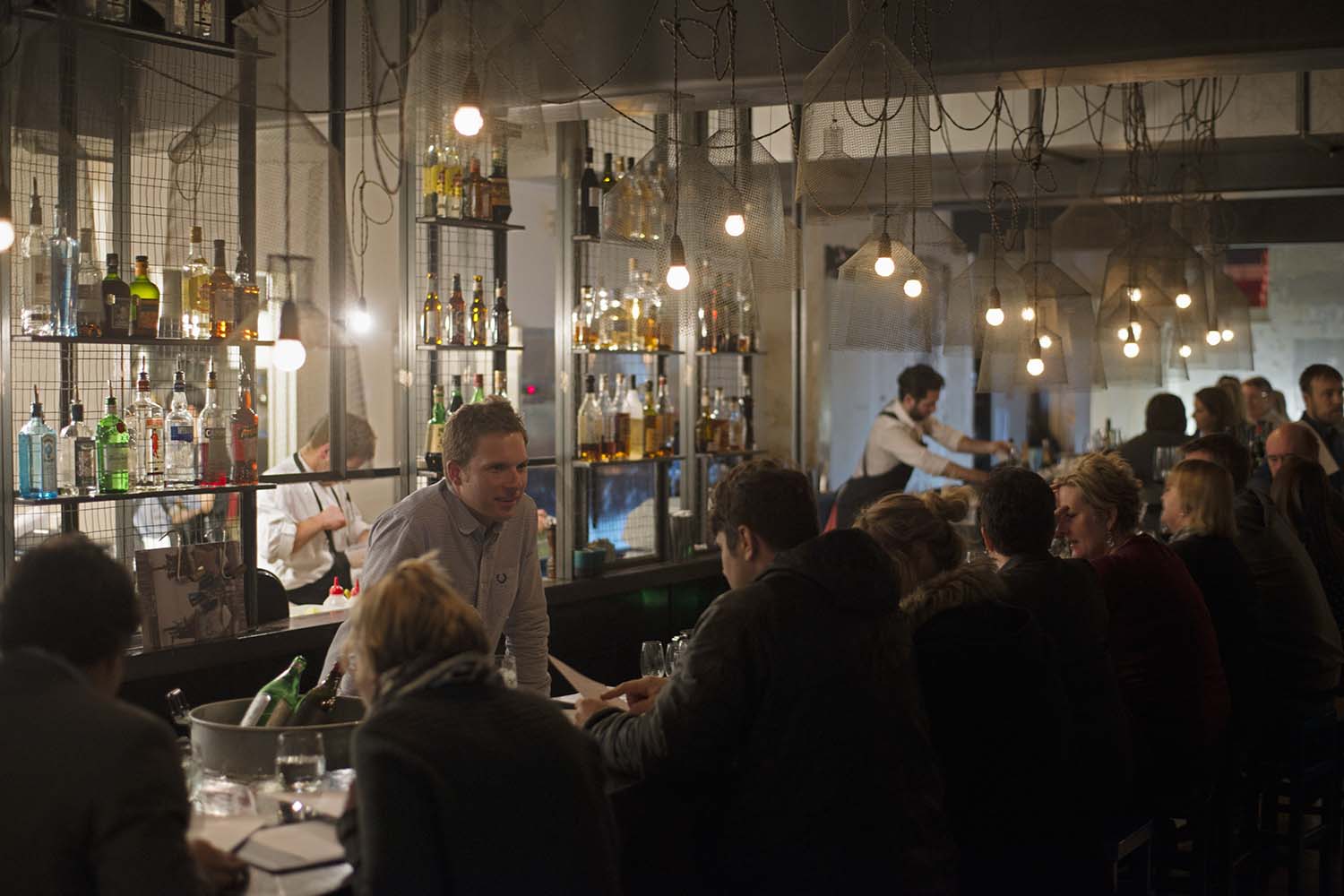
Drinks: Coda
Either Coda, Farmer’s Daughter or Longrain would be just as suitable for dinner, so it depends on what mood you’re in with each and how your planning unfolds. I loved the food at Coda and actually went for dinner myself, but it’s clear that locals love to hang out here and get into the serious wine list. The cocktails use local ingredients and infusions to help make them feel indicative of what’s going on in the culinary scene in Melbourne, and the wines tend to spotlight local winemakers and funky, off-the-beaten path bottles. It’s an ideal spot for a nightcap, but if you do want a snack, the tapioca and prawn betel leaf and crispy blackened quail with five spice salt were wonderful appetizers.
Days 7-8: Suburb Explorations
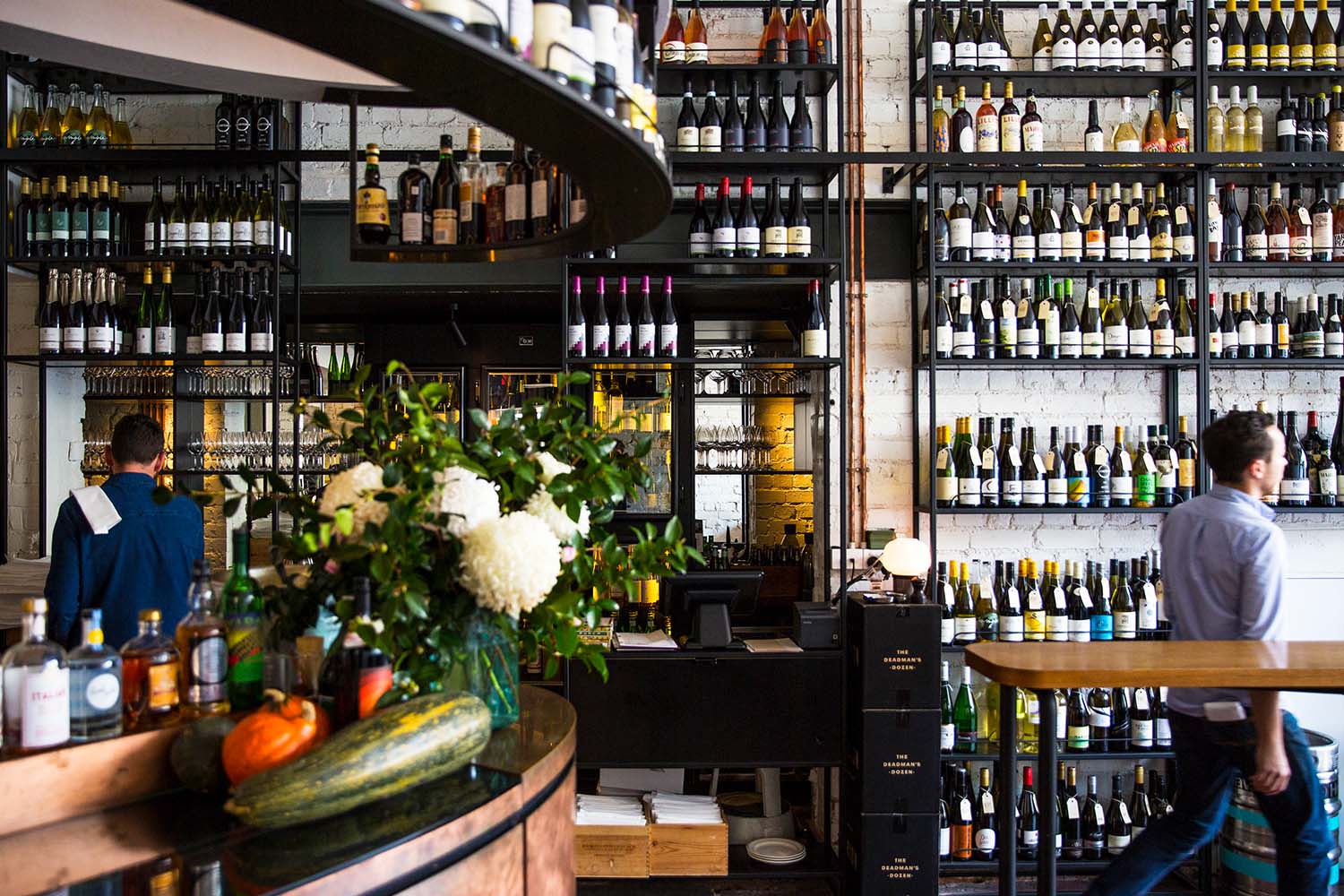
Northern Suburbs
The north and south suburbs function a bit like the Brooklyn to the CBD’s Manhattan, and plenty of young people and artists live in these areas on the outskirts of the city, which means the culture inevitably follows. For instance, my Localing guide showed me the yoga studio where he practices during our visit to Fitzory, a northern suburb, and the vibe was more artsy and laidback, with street fairs, record stores and tea and coffee shops. Fitzroy, Collingwood and Brunswick are all great areas to meander around, but here are a few spots to anchor your wandering.
For a snack in Fitzroy, there’s no better spot than Nico’s, which is constantly mobbed. If you don’t make it out to Fitzroy, there’s a location in the CBD as well, and either the Cubano or the truffle mushroom sandwich are the must-try items. Save up your hunger for a seated meal if you want to try another outpost from chef Andrew McConnell, Marion Wine Bar, which has an extensive wine list as well as flatbread with fromage blanc, beets with labneh and baked pasta with spicy vodka sauce.
Just east of Fitzroy is Collingwood, another popular northern suburb with one of the best coffee shops in the whole city, Acoffee, a boutique roastery that offers subscription boxes, coffee capsules, pour-over kits and a stunning cold brew. There’s also a Lune outpost in Collingwood if you end up over this way early in the morning and want to try your luck in a less tourist-y neighborhood. Be warned though, these pastries are just as popular with the locals.
Venture even farther north to Brunswick for two unmissable foodie stops. One is A1 Bakery, a Lebanese bakery known for their baked goods and pizzas. A halloumi cheese pie is $5 and eats like a super thin calzone. That, plus the labne platter for $8.50 with cucumber, olives and pita, made a perfect lunch. They also have pizzas of all kinds, chicken and other meat platters, hummus platters, pickle plates, dips, wraps, and pita by the pound, plus baklava.
The other is almost next door, Very Good Falafel, where the service wasn’t very friendly but I had what was easily the best falafel sandwich of my entire life. The falafel was crisp on the outside but soft and fluffy in the middle with flavorful herbs high in the mix inside a thin and crusty pita doused in white sauce, sliced pickles, diced tomatoes and cucumbers and house pickled onions.
Southern Suburbs
The best thing in the southern suburbs is yet another unmissable market, this one simply named South Melbourne Market. This is a great place for fresh seafood, with not one but two oyster bars, along with shopping like home goods, regular grocery items, skincare and beauty supplies, and even flowers and terrariums. Please note: this market is only open Wednesday, Friday, Saturday and Sunday. Check the day before making your way down to South Melbourne.
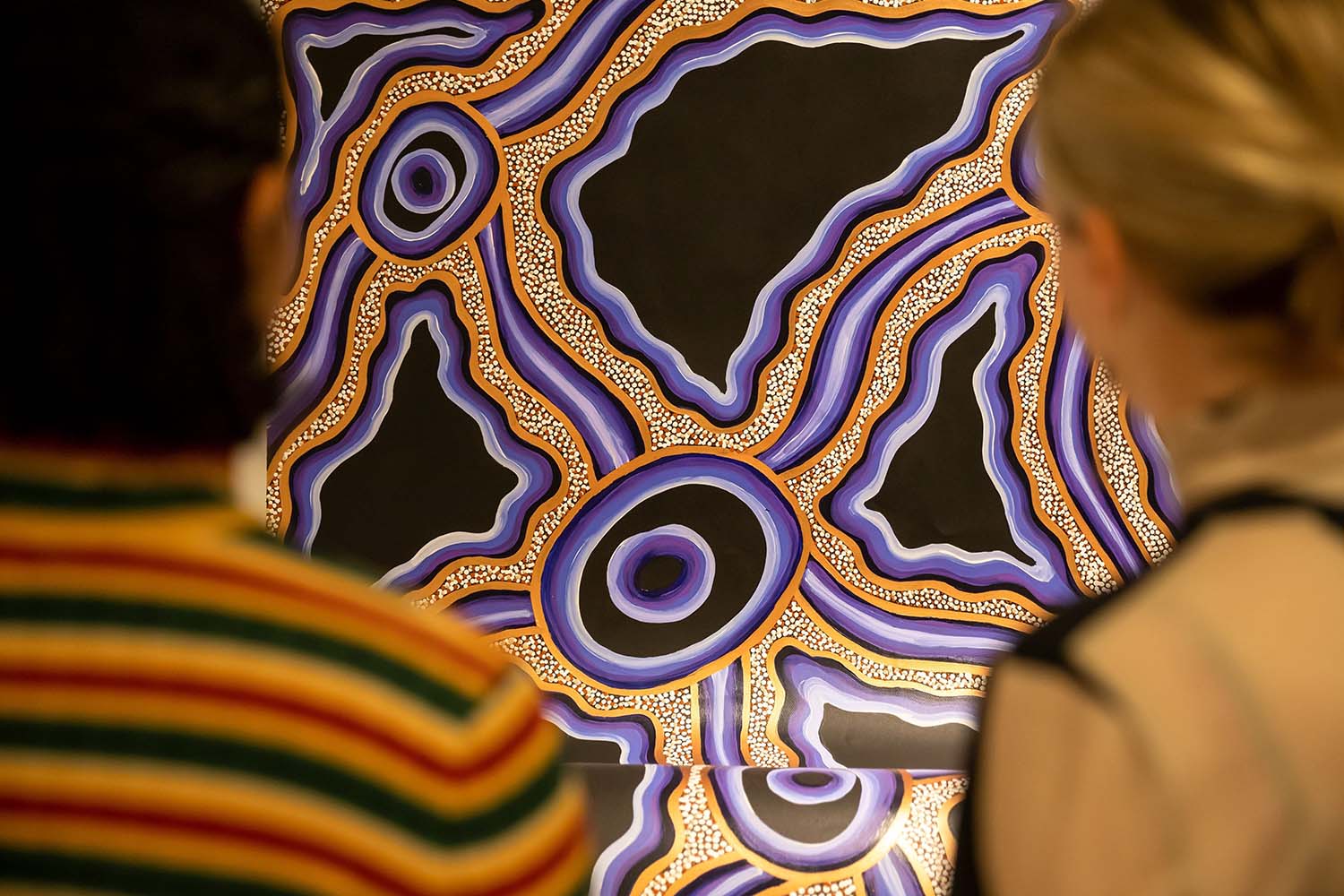
Days 9-10: Last Days in Melbourne
Must-visit: Koorie International Trust
If you haven’t made your way to the Koorie Heritage Trust yet, which is in the central Federation Square, it’s time. Both Australia and New Zealand have done a fantastic job supporting the Aboriginal cultures that were native to the land, working to preserve these historic peoples and to acknowledge the names of the tribes whose land they use today. Visiting Koorie is a great way to familiarize yourself with some of this history as an outsider and pay respect to what came before.
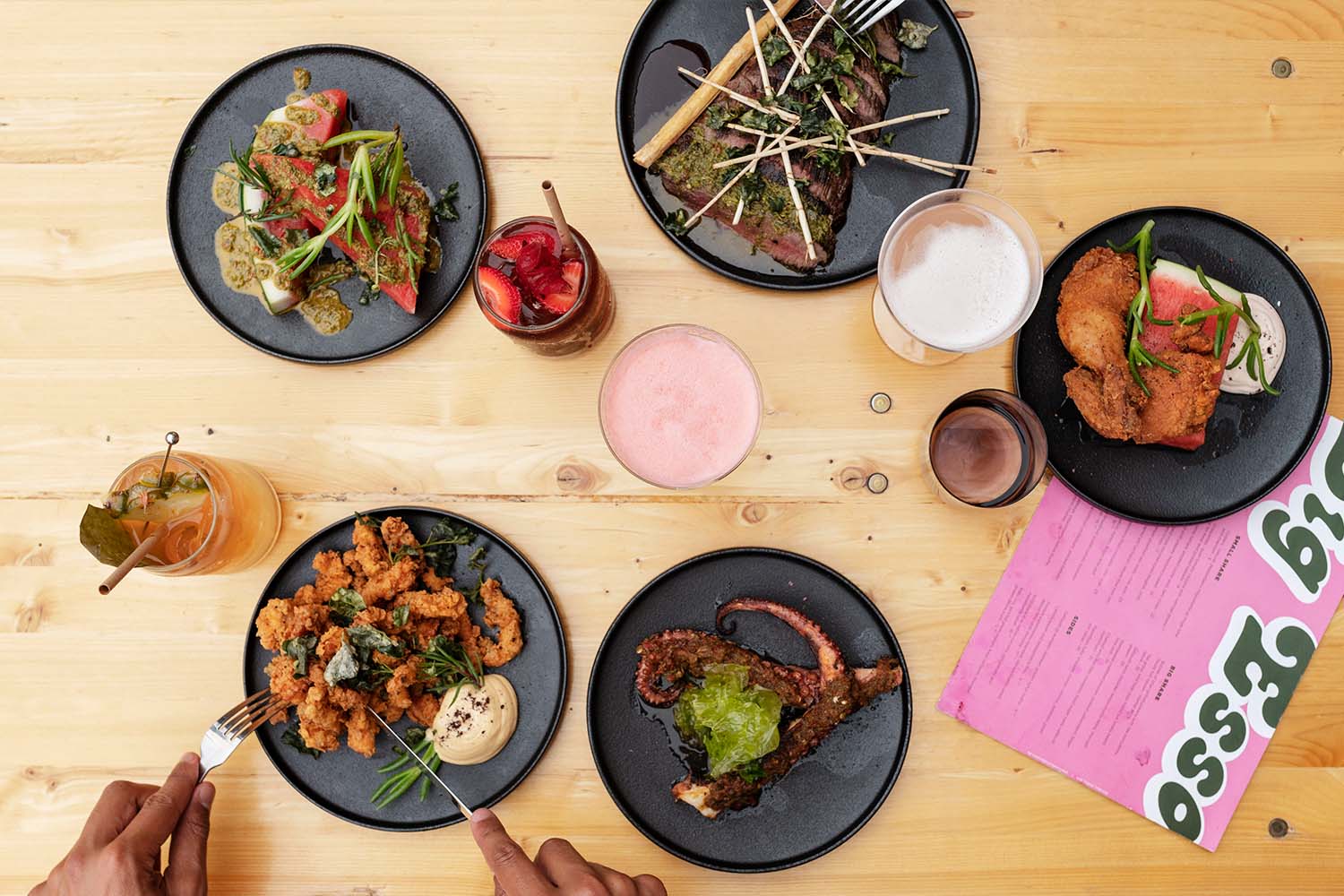
Next door to the center, Big Esso, Mabu Mabu is an indigenous-owned restaurant that serves some of the more traditional Australian dishes like kangaroo, emu, fried crocodile (yes, it tastes like chicken), Goolwa pipi’s (small, saltwater clams) and more. One of my favorites was sautéed morning glory, or water spinach, which essentially tastes like collard greens.
Non-Foodie Suggestions:
For things to do in-between restaurants, or if you want to take a few days off from ingesting multi-thousand calorie meals, here’s what else to explore in the Melbourne CBD.
Modeled after The National Gallery in London, this is one of the oldest and most prominent art museums in all of Australia. Admission is free to the public, though some special exhibits require a paid ticket for entry. Currently hosting a Rembrandt exhibit, the museum includes a large outdoor space that’s accessible for families and children, fostering a very different environment than some Americans might associate with an art museum.
Music nerds will be thrilled to check out this free, interactive exhibit house within the Arts Centre Melbourne. It’s literally next door to the National Gallery, so you can easily make a day of visiting both. With both guided and self-guided tours, this collection of memorabilia and artwork patiently tells the story of some of Australia’s most beloved musicians and their impact on the global music scene.
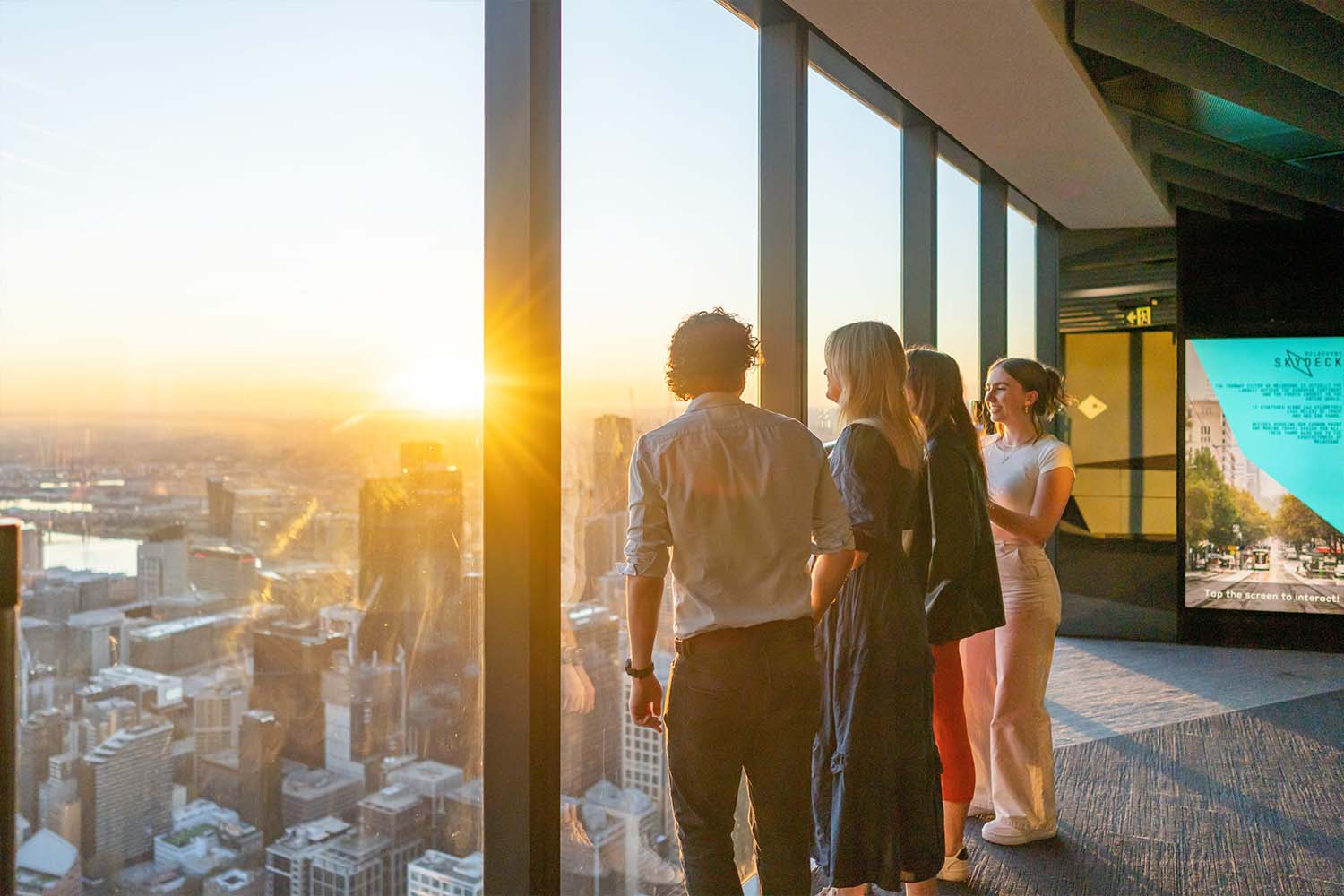
This is a fun, very tourist-y stop if you’re not afraid of heights. Make your way up to Level 88 to get the highest vantage point in the city, and test your limits with some of the height-defying programming like The Edge or a VR Plank. This is the highest observation deck in the entire southern hemisphere, so if you need a drink at the top, there’s a bar up there, too.
There are arcades, or historical malls with Italianate architecture all over Melbourne, but the Royal Arcade is the most famous. Within the ornate halls, retailers set up shop like they might in any normal mall, but the added sense of pomp and grandeur proves just how much architecture can make a difference.
I never would’ve found this on my own. A local from one of my tours took me to see this library, which is like something out of Hogwarts. Excuse the Harry Potter reference, but this is a wizard-like place with its circular main room, stunning dome ceiling and dots of green lights along golden lines of desks. Entry is free, and it’s the perfect place to post up for a workday if you need a quiet place to focus during your visit. It’s also just a romantic spot to wander around for fun.
Final Foodie Stops:
When planning out where to eat in Melbourne, do not leave town without hitting these two, as both were highlights of my trip.
Fulfill all your bakery dreams at Brunetti, where a coffee and a high-end pastry is just as decadent as ordering a whole cake to go. For those of you who love Porto’s in Los Angeles, this Italian cafe is on a similar tip. It’s good for anything from a glass of Champagne or a cocktail, to a cupcake, a box of chocolates, an entire dessert hamper — you get the idea. (Too bad cakes don’t transport well on planes, or some of these would’ve made their way home with me.)
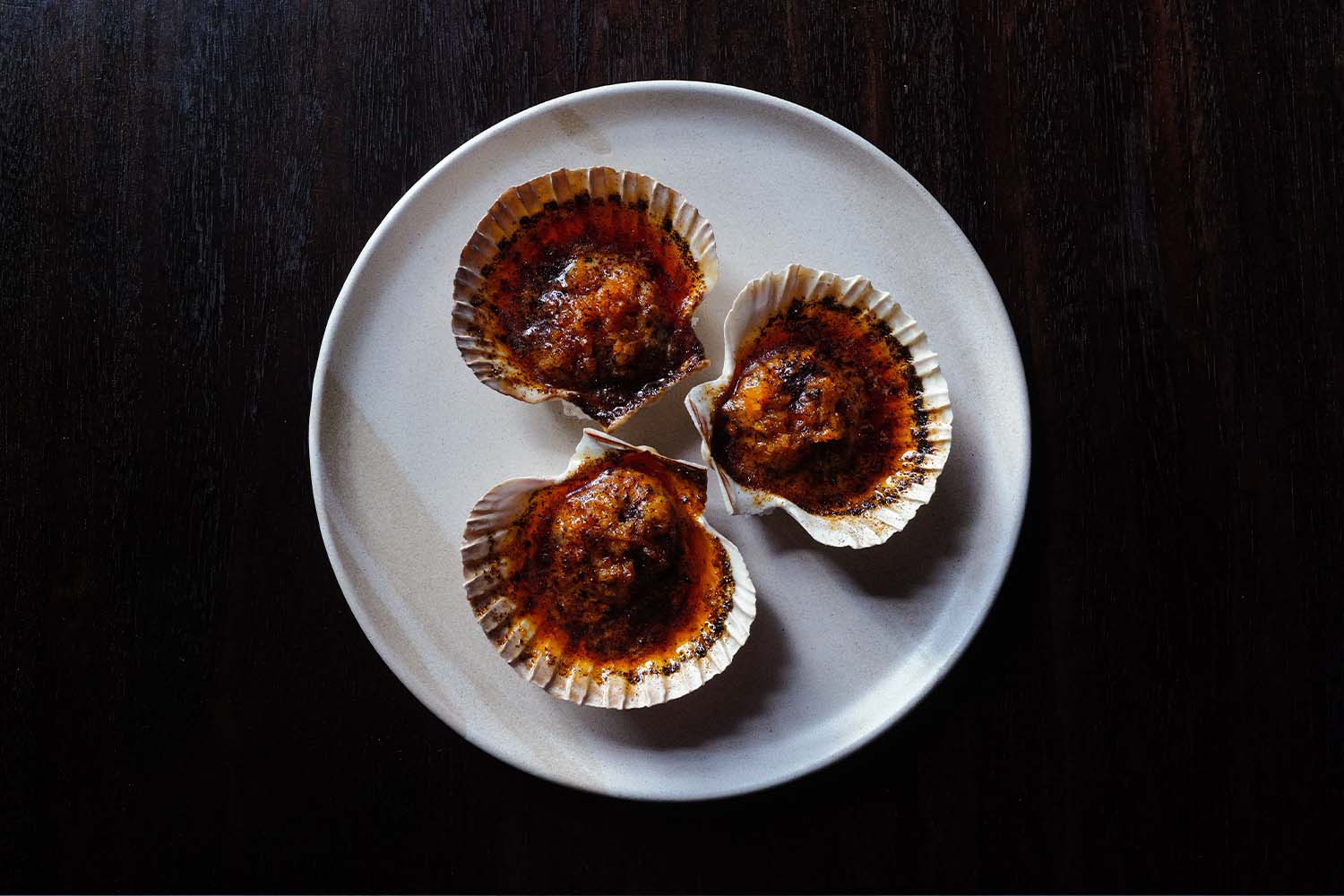
For some reason, this small plates wine bar didn’t make it onto my radar until my last day in town. With a few hours to kill before my evening flight, I walked to Embla for one last bite before heading home. Thank God I did. This is the ideal spot for anyone who loves a high-end nosh and a glass of something magic. I opted for a non-alcoholic Gruppetto spritz, even though the wine list sounded divine. Soured cucumbers on a bed of dill and whipped feta were like the deconstructed Greek salad of my dreams, and a large, $10 hunk of freekeh sourdough was actually worth the money. Chef Dave Verheul’s plates landed a spot on 50 Best for a reason. Finally, fried artichoke and gribiche and a chicken skin crisp with whipped anchovy and puntarelle (bitter green) were exactly the anti-airport food sendoff I needed to leave satisfied and ready to sleep for a 15-hour flight home.
Join America's Fastest Growing Spirits Newsletter THE SPILL. Unlock all the reviews, recipes and revelry — and get 15% off award-winning La Tierra de Acre Mezcal.
